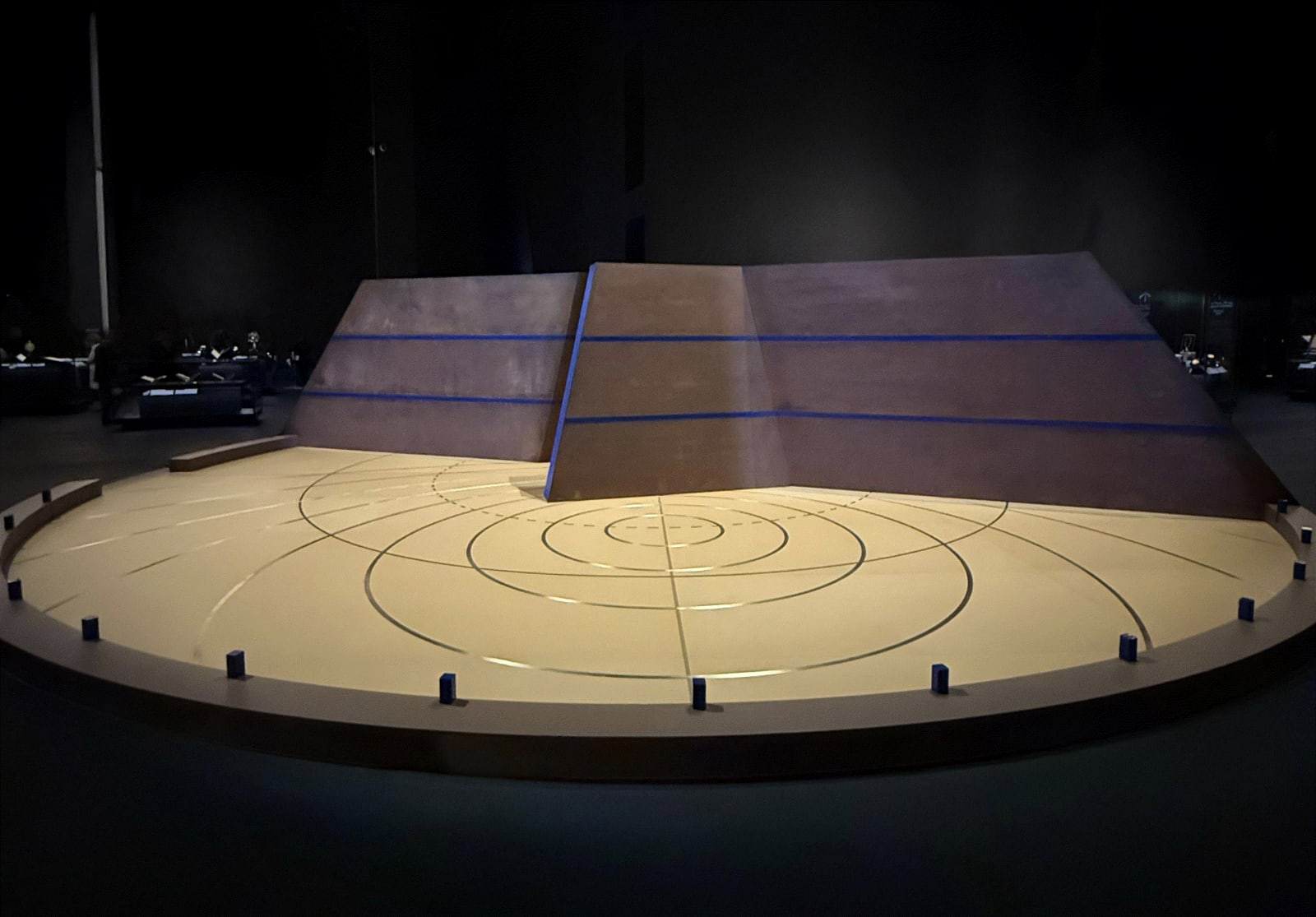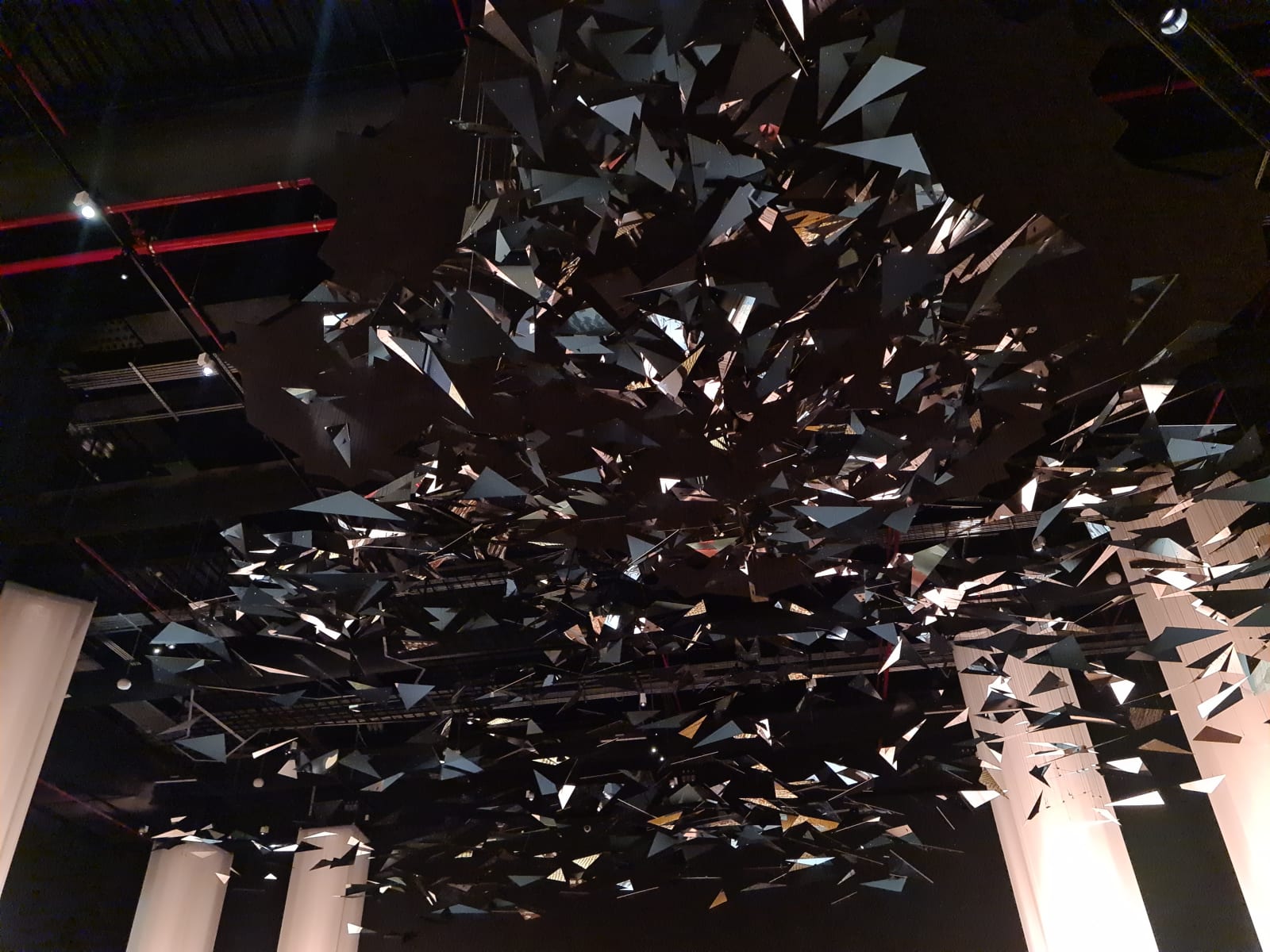Artists Mehdi Moutashar and Timo Nasseri feature in the second edition of the Islamic Arts Biennale, titled “And all that is in between”, now open from January 25 to May 25, 2025, in Jeddah.
Held at the iconic Western Hajj Terminal of King Abdulaziz International Airport—a site steeped in the memories and emotions of millions of Muslim pilgrims embarking on their sacred journeys for Hajj and Umrah—the Biennale serves as a profound meeting point of cultures and ideas.
By juxtaposing historical artifacts from Islamic traditions with contemporary art, the Biennale offers a compelling exploration of how faith is experienced, expressed, and celebrated through feeling, thought, and craftsmanship.
As part of this edition, Mehdi Moutashar and Timo Nasseri unveil bold new works created exclusively for the Biennale, underscoring its role as a platform for groundbreaking artistic platform.
Mehdi Moutashar presents Alidade (2025)
Alidade (2025) is a walkable construction that borrows formal and philosophical elements from the universal astrolabe. The astrolabe is a codifed scientifc tool and translates the universe’s complex celestial and planispheric logics for human use and navigation. Originally a Greek invention and then enhanced by Islamic polymaths, the tool made it possible to travel across land and sea while retaining the position of Makkah al-Mukarramah as the main geographical point. Mehdi Moutashar’s construction is concerned with the question of orientation as posed by the astrolabe, involving the cardinal points, the angle defined by the fold, and the fragmented line of space and time.
Timo Nasseri presents Echoes of the Skies, 2025
Inspired by 12th-century Persian poetry, Echoes of the Skies (2025) is a propositional work of self-discovery. The artwork features avian protagonists who embark on a quest to find their sovereign: the mythical Simorgh. The birds traverse seven valleys, each representing a stage of spiritual enlightenment, culminating in the realization of divine unity within all creation. The installation conceptually merges the allegorical depth of 12th-century Persian poetry with the heritage of Islamic architecture. Integrating the iconic Islamic muqarnas pattern in the work, they serve as the foundation for a flock of reflective birds, symbolizing both individual souls and the collective consciousness of humanity.



